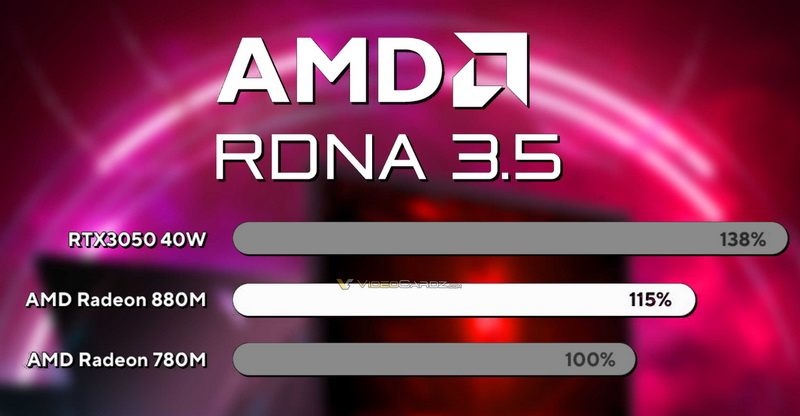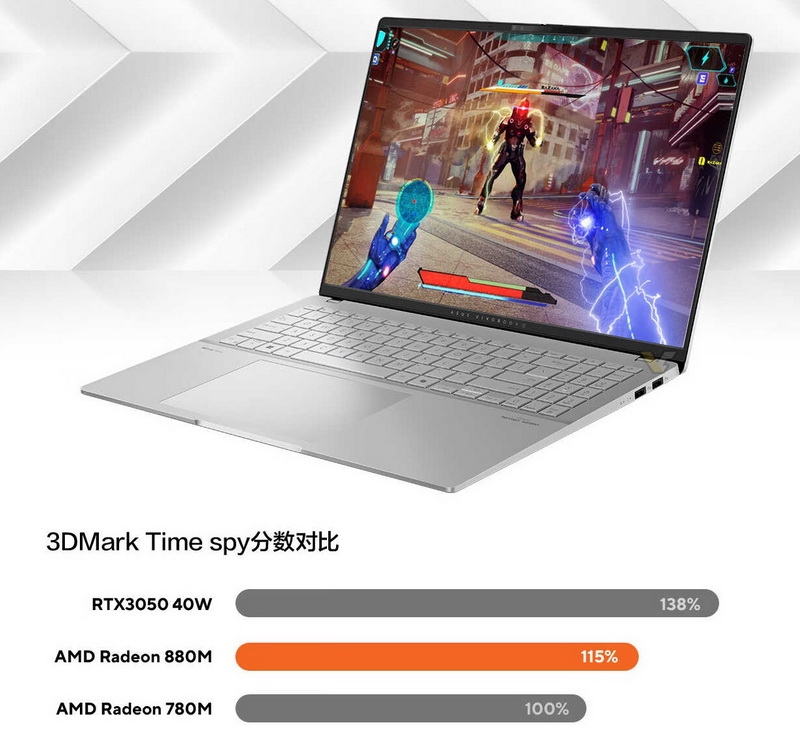The Radeon AI 300 series includes only two mobile processors: the 12-core Ryzen AI 9 HX 370 and the 10-core Ryzen AI 9 365. The first is equipped with integrated Radeon 890M graphics with 16 Compute Units (CU) on the RDNA 3.5 architecture, the second I got a Radeon 880M with 12 CUs. The latter has the same number of CUs as the most powerful “built-ins” of the predecessors of the Phoenix and Hawk Point series. Asus explained how much faster the new graphics are.

Image source: VideoCardz
As part of the recent Zen5 Tech Day event, AMD announced that the integrated Radeon 890M graphics in the older Ryzen AI 9 HX 370 processor is faster than the previous Radeon 780M by 19 to 32% at the same TDP level of 15 W in 3DMark tests. However, AMD did not tell how the Radeon 880M in the younger Ryzen AI 9 365 performs against the Radeon 780M. Asus decided to share this information, advertising the new Vivobook series laptop, which will offer Radeon AI 300 series processors.

Radeon 890M performance. Image Source: AMD
According to Asus, the Radeon 880M is on average 15% faster than the Radeon 780M graphics. The performance of the new iGPU is approaching the GeForce RTX 3050 mobile graphics card with a TDP of 40 W. The manufacturer claims that it obtained these results while testing the Radeon 880M in the 3DMark TimeSpy benchmark.

Image source: ASUS
«The new [mobile] AMD Radeon 880M graphics performance approaches the 40W [mobile] RTX 3050. The 12 execution units on the new AMD RDNA 3.5 architecture improve graphics performance by approximately 15% over the previous generation and approach the performance of the mobile RTX 3050 TDP 40 W. “The new AMD graphics can deliver smooth gameplay in popular MOBA and FPS games, as well as many AAA titles,” Asus said in a statement.
AMD Radeon 800M mobile graphics also have a 100 MHz higher boost frequency compared to the previous generation iGPU. Additionally, most laptops with Radeon AI 300 processors will come with faster LPDDR5X memory rather than DDR5. This should also have a positive impact on integrated graphics performance.